Description
The Capability Viewpoint describes the approach to creating the Capability View for an Architecture Description.
The Capability Viewpoint provides a view of the 'System-of-Interest' in terms of the Capabilities necessary to achieve the overall purpose of the organization.
The concept of Capability is used throughout this Architecture Description Framework. Capabilities are defined and are realised through the interaction of people, process and technology within an Organization. The following pictures shows the relationships.
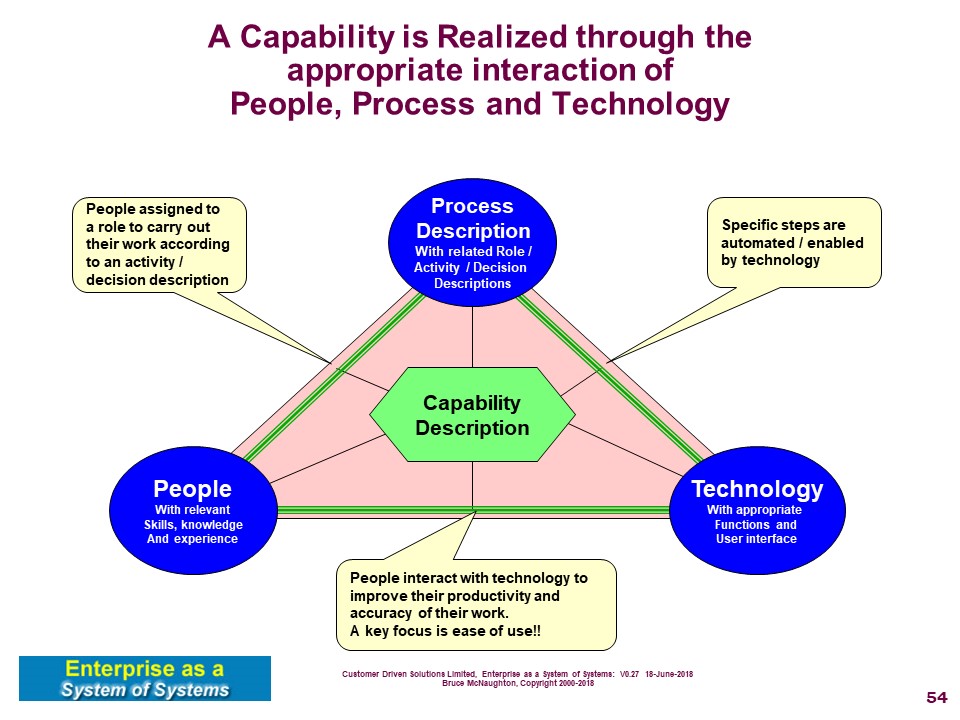
and
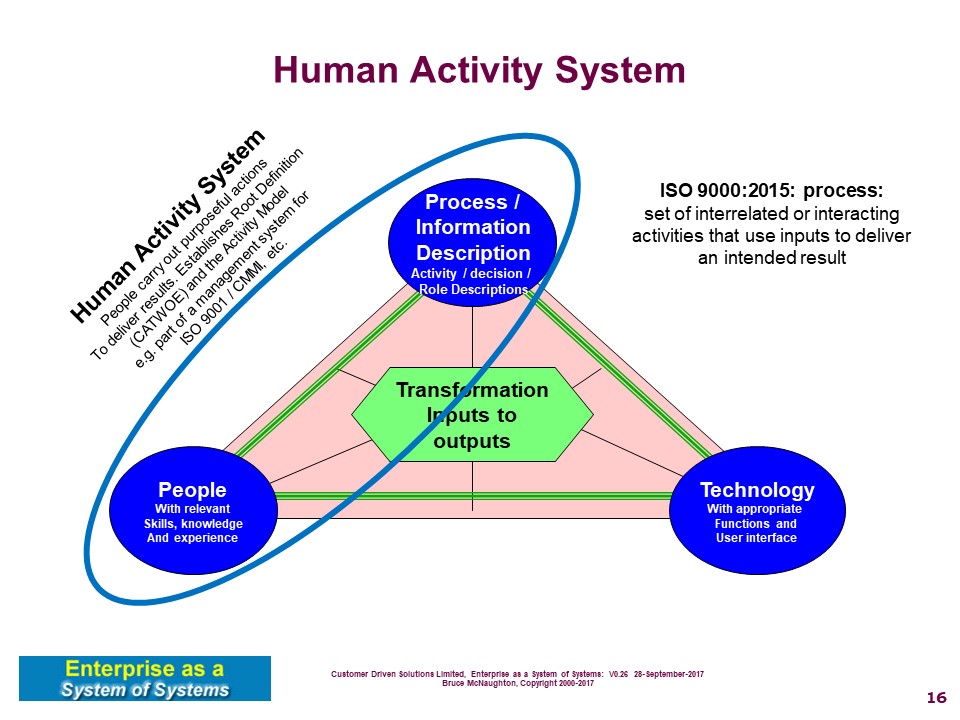
When capabilities are allocated to organizations or teams they form sub-systems that realise the capabilities (See Adaptive Enterprise) or are Capability Systems (See The Essential Advantage). The following picture shows the relationship of capabilities to teams:
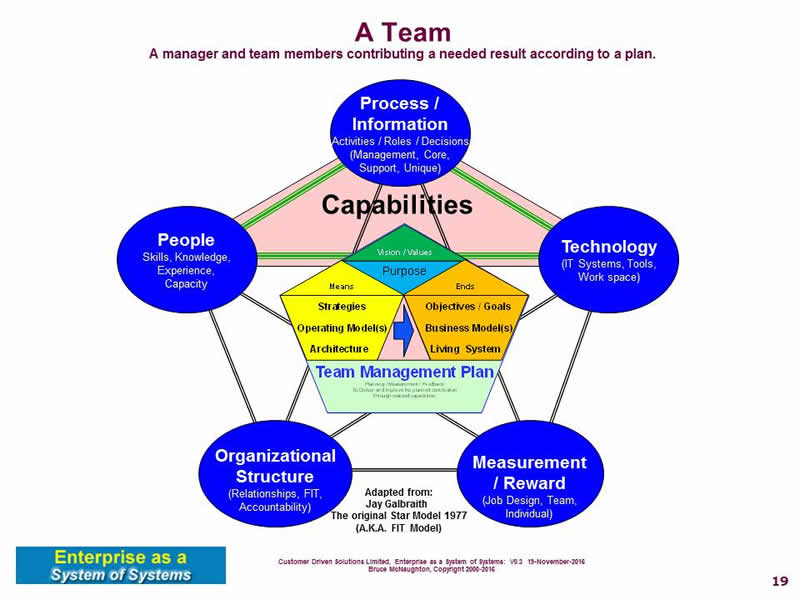
This viewpoint provides the information needed for the next levels of design, development, test, and deployment of the capabilities used within an organization:.
- The interactions and relationships between capabilities are identified and understood
- The capabilities can be grouped into sets that demonstrate how external standards will be met or provide descriptions of internal capabilities requiring set of capabilities (asset
- management, planning, new product development, etc).
- The capability allocation to teams is understood.
Capabilities are identified and defined using a capability template. This template describes a capability that can be allocated to any team for implementation.
Capabilities are developed and managed by a Capability Innovation Team using the Capability Innovation Life Cycle.
PDF: System Description: Capability as a System,
The capabilities are documented in a Capability Model
Rationale
- Capabilities contribute to the delivery of the purpose and performance of the organization.
- Capabilities are an essential element of an Integrated Management System that meets multiple standards or regulations.
- Capabilities form one of the dimensions of the Operating Model.
- Organizations identify the critical capabilities they need to carry our their purpose.
- 100% of the critical capabilities that can be used by or allocated to teams are identified in this view. Other views are looking at specific elements of the capability across the entire organization.
- Consistent implementation and replication of capabilities where appropriate establishes consistency and cost effectiveness across the organisation.
- Capability Innovation Team will use this architecture view to manage their development and implementation of the Capabilities.
- Capabilities provide a view of where skills, knowledge, experience and technology are allocated throughout the organizations.
Stakeholders and their Concerns
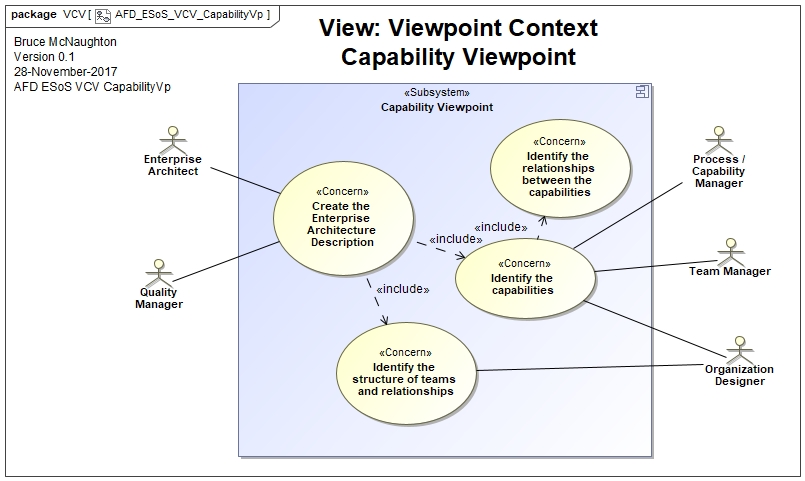
Ontology Concepts and System Descriptions
System Descriptions: Management System, Team, Team Capability
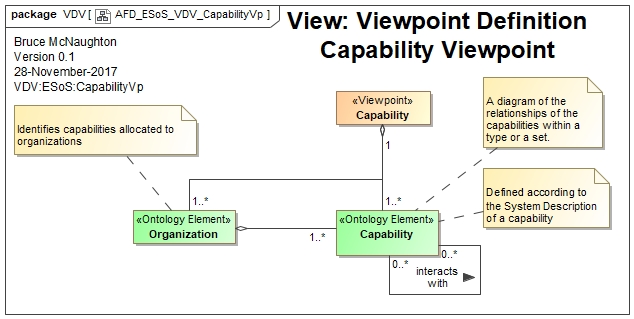
Models
Capability Model. There may be 3 capability models for an organisation: Management, Design, Develop and Change, Provision of Products and services. Other capability models may identify sets of capabilities that demonstrate compliance with external standards or provide wider capabilities to the organization (e.g. planning, asset management, new product development, etc).
Steps to Create the View
- Identify the scope of the management system and the purpose, objectives and goals that are to be achieved.
- Identify any organizational capabilities that are relevant to this management system.
- Using the scope, identify the set of team capabilities necessary to achieve the objectives
- use various reference Capability Models to ensure that some are not missed
- Only establish the capabilities by name unless there is a history of capabilities in use.
- Create a Capability Model for the set of team capabilities
- Review the capability model.
Correspondences
CR01: Capabilities provide the initial lists of processes to be defined for the management system..
Examples
Examples of typical capabilities found in organisations can be seen here. See Capability Model
Sources
- Adaptive Enterprise, Stephan Haeckel
- Competitive Advantage, Michael E. Porter
- Dynamic Capabilities and Strategic Management, David J. Teece
- Enterprise Architecture as Strategy, Jeanne W. Ross and Peter Weill and David C. Robertson
- Exponential Organizations, Salim Ismail
- Management: Tasks, Responsibilities and Practices, Peter Drucker
- Requisite Organisation, Elliott Jaques
- The Essential Advantage, Paul Leinwand and Cesare Mainardi
Notes